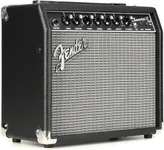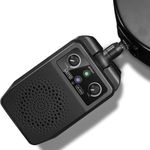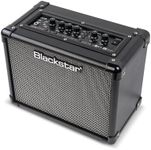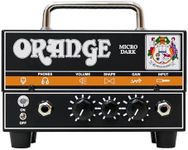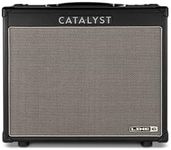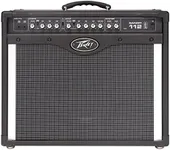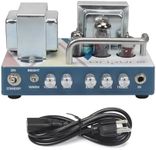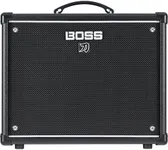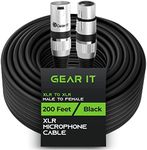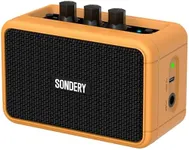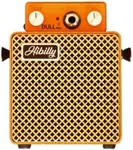Buying Guide for the Best Guitar Amp With Effects
Choosing the right guitar amp with effects can significantly enhance your playing experience and sound quality. The right amp will depend on your playing style, the type of music you play, and where you plan to use it. Understanding the key specifications will help you make an informed decision and find the best fit for your needs.Power Output (Wattage)Power output, measured in watts, determines the amp's volume and headroom. Lower wattage amps (1-20 watts) are great for home practice and small gigs, offering good sound at lower volumes. Mid-range wattage amps (20-50 watts) are versatile for both practice and small to medium venues. High wattage amps (50+ watts) are suitable for large venues and professional use, providing more volume and clean headroom. Choose based on where you'll be playing most often.
Speaker SizeThe size of the speaker affects the amp's sound projection and tonal characteristics. Smaller speakers (8-10 inches) are more focused and punchy, ideal for practice and recording. Medium speakers (12 inches) are the most common, offering a balanced sound suitable for various genres and venues. Larger speakers (15 inches) provide deeper bass and are often used for specific styles like jazz or bass guitar. Consider the type of music you play and the sound you prefer.
Built-in EffectsBuilt-in effects can include reverb, delay, chorus, distortion, and more. These effects allow you to shape your sound without needing additional pedals. Basic amps may have a few essential effects, while more advanced models offer a wide range of options. If you enjoy experimenting with different sounds, look for an amp with a variety of built-in effects. If you prefer a straightforward setup, a simpler amp with fewer effects might be sufficient.
ChannelsAmp channels allow you to switch between different sounds, such as clean and distorted tones. Single-channel amps are straightforward and easy to use, ideal for beginners or those who stick to one sound. Multi-channel amps offer more versatility, allowing you to switch between different tones for various songs or styles. If you play a wide range of music or need quick access to different sounds, a multi-channel amp is beneficial.
PortabilityPortability is important if you plan to move your amp frequently, such as for gigs or practice sessions. Smaller, lighter amps are easier to transport but may have less power and fewer features. Larger amps offer more power and features but can be cumbersome to move. Consider how often you'll need to transport your amp and choose one that balances portability with your other needs.
ConnectivityConnectivity options, such as headphone jacks, line out, and USB ports, can enhance your playing experience. Headphone jacks allow for silent practice, line out can connect to recording equipment or PA systems, and USB ports enable direct recording to a computer. Think about how you plan to use your amp and which connectivity options will be most useful for you.
